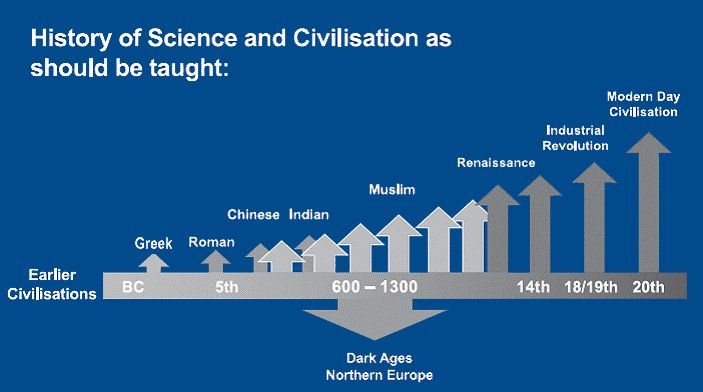Background
Why?
When we look at modern sources on mathematics, chemistry, physics and medicine, we find a one thousand year gap. This gap corresponds to a period after the fall of the Roman Empire to the beginning of the Renaissance in Europe; the period previously known as the ‘Dark Ages’. This is a misnomer as inventions, discoveries and innovative science had never really ceased: this period corresponds to a time when the Muslim civilisation was flourishing. This amnesia in relation to culture and heritage is dangerous, in that it both feeds the superiority complex of some nations, and introduces an inferiority complex among other nations, particularly those that are Muslim.
During the golden age, the Muslim World achieved a harmony between Muslims and non-Muslims that included the joint efforts of men and women who worked together to build a better society. There were many Christian, Jewish, and Sabean scholars who contributed to the betterment of life in their societies. Furthermore, the contribution of women to science and to the welfare of that civilisation is little known, despite the fact that there were numerous female scientists, astronomers, mathematicians, doctors, pharmacists, and that some built hospitals and schools, and ran businesses long before women’s rights were recognised in Europe.
Schools’ curricula need to be enriched in order to recognise the inventions from other cultures such as the Muslim world, China, and India. Similarly, schools in Muslim societies need to modify their curricula to reflect the harmonious relationship between Muslim and non-Muslim scientists and scholars during the golden age and draw out the positive role of women in science, technology, medicine and arts during the early centuries of Muslim civilisation.

How?
We use the history of science as a new platform for non-religious, non-political and cultural, dialogue through many educational initiatives. The significance of this platform is its ability to use the roots and routes of scientific inventions to enhance social cohesion and to foster inter-cultural appreciation.
The backbone of our work is primary research from original manuscripts currently residing in archives and libraries around the world, and secondary research building on existing publications. This work is conducted by our international network of academics who work together to bring to life some of those inventions from the past that directly or indirectly affect modern society.
The peer reviewed research is then transformed to reach the public domain through high quality productions; exhibitions; teaching materials; websites; films; and public lectures. These are implemented through various projects and initiatives either in house by FSTC or by one of its subsidiaries: 1001 Inventions, Muslim Heritage Awareness Group (MHAG), Curriculum Enrichment for the Common Era (CE4CE) and MuslimHeritage.com.
Through these outlets, we introduce students and the public to strong, positive role models from history. Such role models demonstrate that regardless of background, by means of co-operation and with a moral framework as guidance, everyone is capable of making great contributions to society. With this, we hope to inspire a new wave of young people to apply themselves to change the world for the better, solving the problems of today’s societies by the application of both science and ancient wisdom.
